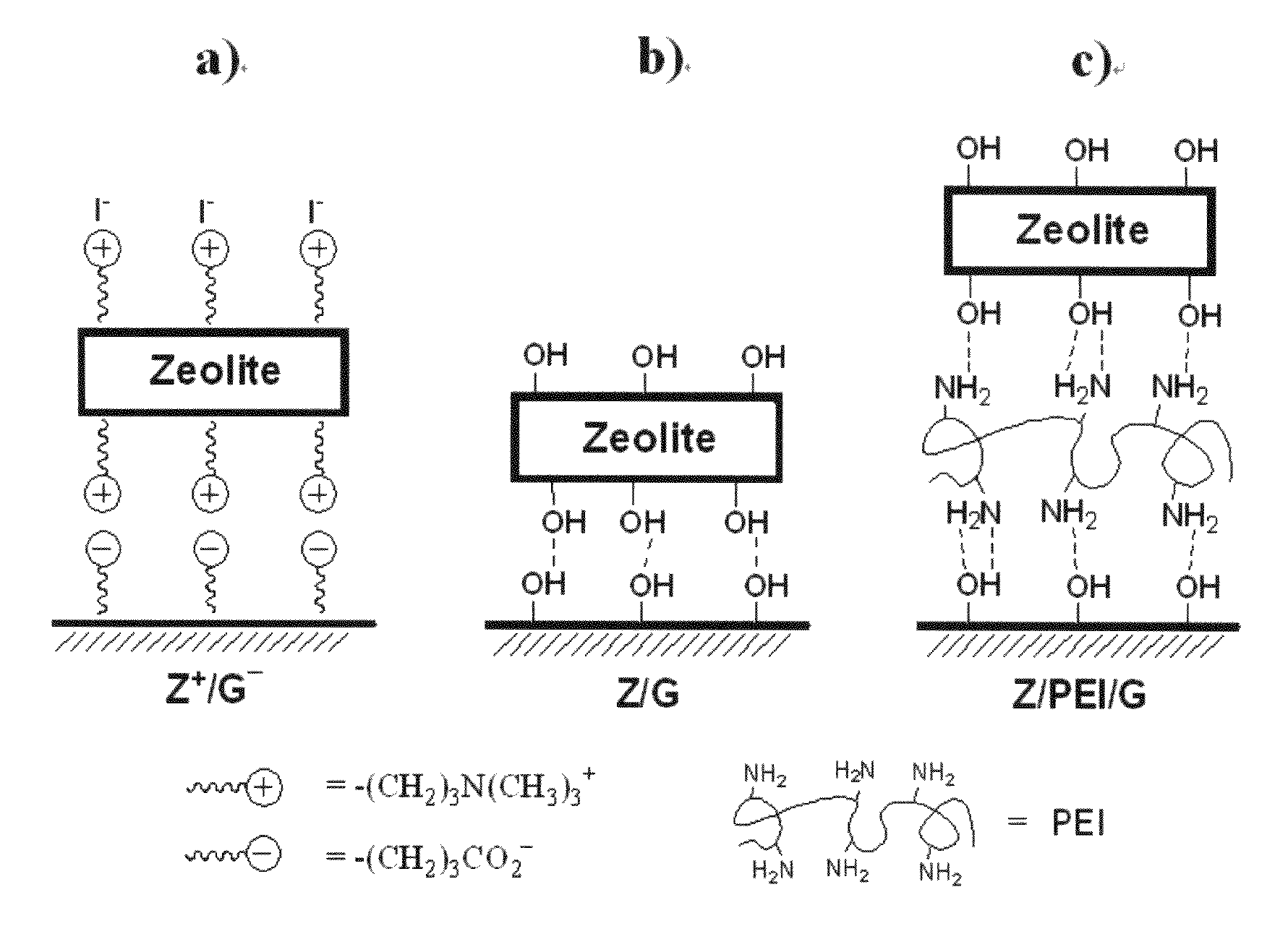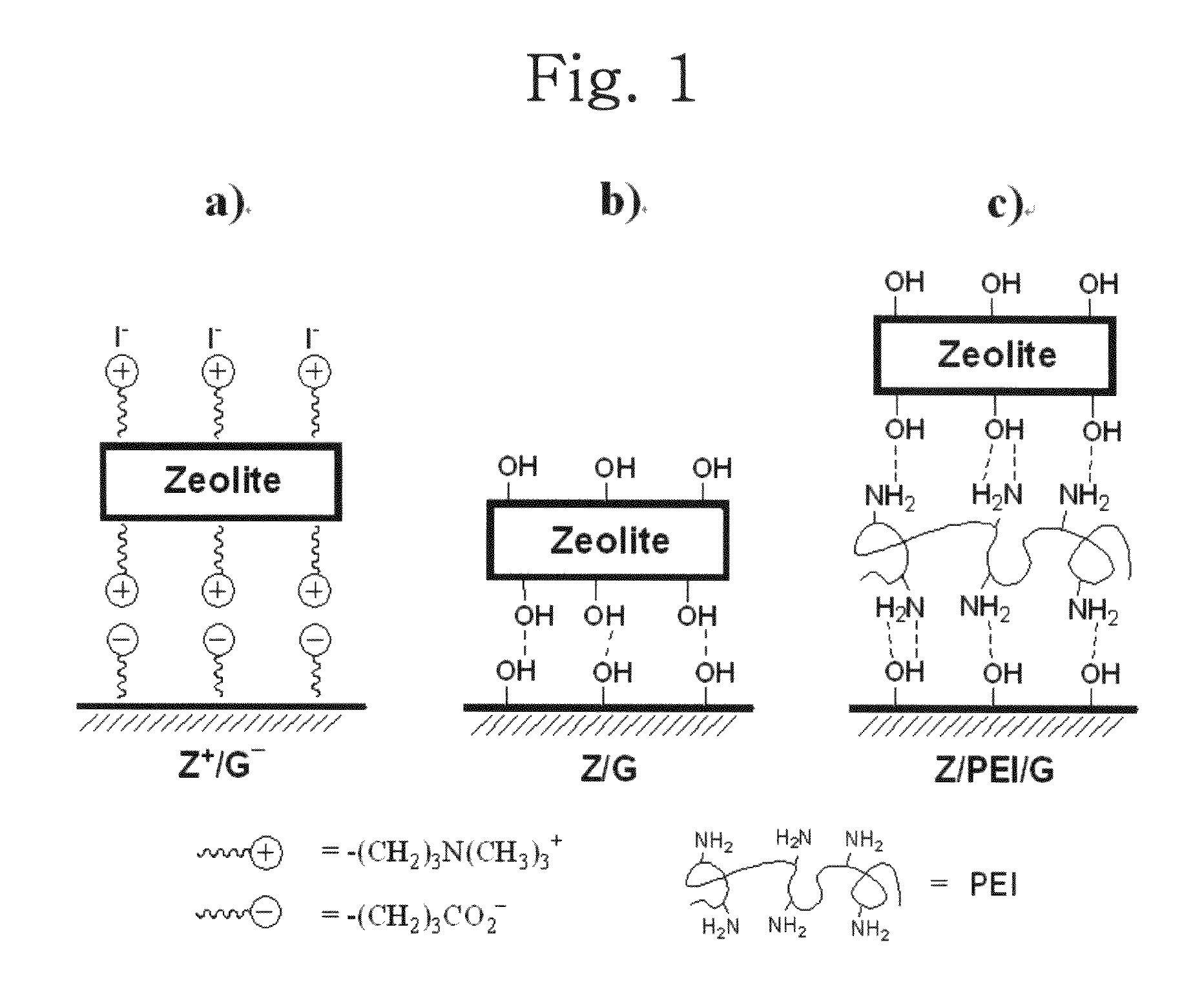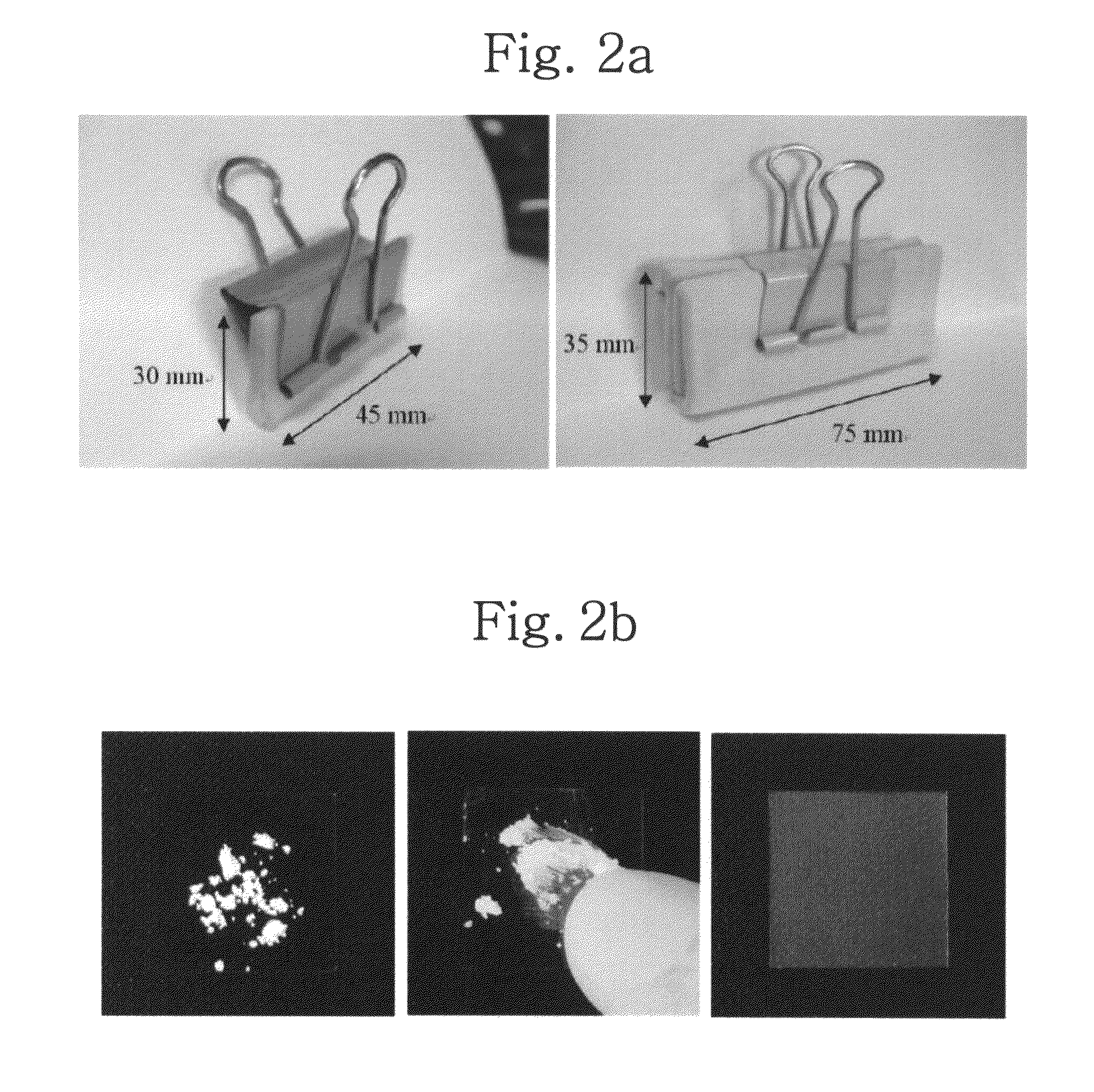Methods for preparing composites of substrate-molecular sieve
a technology of molecular sieve and composite material, which is applied in the direction of silicon compounds, physical/chemical process catalysts, ceramic layered products, etc., can solve the problems of affecting the formation of linkages between substrates and zeolite particles, and affecting the arrangement of zeolites
- Summary
- Abstract
- Description
- Claims
- Application Information
AI Technical Summary
Benefits of technology
Problems solved by technology
Method used
Image
Examples
example 1
Preparation of Silicalite Monolayer Using Polyethyleneimine (PEI)
Preparation of Polyethyleneimine-Tethered Glass Plates
[0093]Glass plates (18×18 mm2, Marienfeld) were immersed in piranha solution (H2SO4:H2O2=7:3) for 30 min and washed with distilled water, followed by drying under nitrogen atmosphere. The dried glass plates were coated with polyethyleneimine (PEI, Aldrich, Mw=25000) diluted in ethanol by spin coating, resulting in the production of PEI-tethered glass plates, PEI-G. Finally, the PEI-G glass plates were dried under nitrogen atmosphere.
Preparation of Silicalite Monolayer by Rubbing
[0094]The PEI-G plates were placed on a clean filter or weighing paper and fixed with adhesive tapes. Bare zeolite crystals were attached onto the surface of the PEI-G plates by rubbing.
[0095]Silicalites with different crystal sizes were synthesized as follows: Silicalites with four different average sizes (0.3×0.1×0.6, 1.3×0.5×1.7, 2.5×1.2×4.1, and 4.6×1.5×11 μm3) were prepared using a synth...
example 2
Preparation of Zeolite a Monolayer Using Polyethyleneimine (PEI)
[0096]Zeolite A monolayer was formed on the glass surface according to procedures of Example 1, except that zeolite A as molecular sieve particles was used instead of silicalite.
example 3
Preparation of Soil Particle (Layer Structure Material) Monolayer Using Polyethyleneimine (PEI)
[0097]Soil-particle monolayer was formed on the glass surface according to procedures of Example 1, except that soil particles as molecular sieve particles were used instead of silicalite.
PUM
| Property | Measurement | Unit |
|---|---|---|
| size | aaaaa | aaaaa |
| size | aaaaa | aaaaa |
| size | aaaaa | aaaaa |
Abstract
Description
Claims
Application Information
 Login to View More
Login to View More - R&D
- Intellectual Property
- Life Sciences
- Materials
- Tech Scout
- Unparalleled Data Quality
- Higher Quality Content
- 60% Fewer Hallucinations
Browse by: Latest US Patents, China's latest patents, Technical Efficacy Thesaurus, Application Domain, Technology Topic, Popular Technical Reports.
© 2025 PatSnap. All rights reserved.Legal|Privacy policy|Modern Slavery Act Transparency Statement|Sitemap|About US| Contact US: help@patsnap.com



